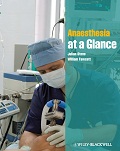You are asked to see a 65-year-old patient on the surgical ward who is in pain after a laparotomy, which was performed for diverticular disease.
-
1. What information would you want when reviewing this patient?
Show Answer
Correct answer: A review of the anaesthetic record and medication chart in order to establish what analgesia has already been given as well as their timing. It is important to ensure regular analgesia is prescribed to avoid unnecessary delays in administration.
It is also important to assess the severity of the pain, as a guide to deciding what analgesia is required and to monitor progress of pain management.
The nature of the pain is important. If the patient describes cramp-like pain, an antispasmodic (e.g. hyoscine) can alleviate symptoms.
-
2. What analgesic techniques can be used postlaparotomy?
Show Answer
Correct answer: Regular paracetamol and a NSAID if tolerated along with:
- Morphine PCA or
- Epidural analgesia – inserted at a low- to midthoracic level to ensure analgesia of the proximal end of the laparotomy wound.
- Spinal anaesthesia, as part of the anaesthetic technique for surgery. A long-acting opiate such as diamorphine can produce several hours of analgesia postoperatively. After its analgesic effects have worn off, a PCA can be introduced.
- At the time of surgery a rectus sheath catheter can be placed, with boluses of local anaesthetic given on the ward.
- Transversus abdominis plane (TAP) blocks can also be used, where local anaesthetic is introduced between the transversus abdominis and the internal oblique abdominal muscles bilaterally (usually with ultrasound guidance).
-
3. What approach to prescribing analgesia would you use?
Show Answer
Correct answer: The World Health Organization analgesic ladder describes a step-wise increase in analgesia – initially, simple analgesics with subsequent addition of further analgesia:
paracetamol
+
non-steroidal anti-inflammatory drugs
+
weak opiate, e.g. codeine
+
strong opiate, e.g. morphine
-
4. What other drugs must be prescribed when using strong opiates in this setting?
Show Answer
Correct answer: Antiemetics – multimodal antiemetic prescribing will help reduce the incidence of PONV. Bowel surgery and opiates will increase the risk.
Constipation is also a common side effect and so adequate hydration must be maintained and aperients prescribed.
-
5. What are the implications if the patient was taking opiates before admission for an unrelated condition?
Show Answer
Correct answer: Tolerance develops with chronic opiate use, and standard doses of opiates used in the postoperative period might not be sufficient. Expert advice must be sought before large doses of opiate are prescribed.

